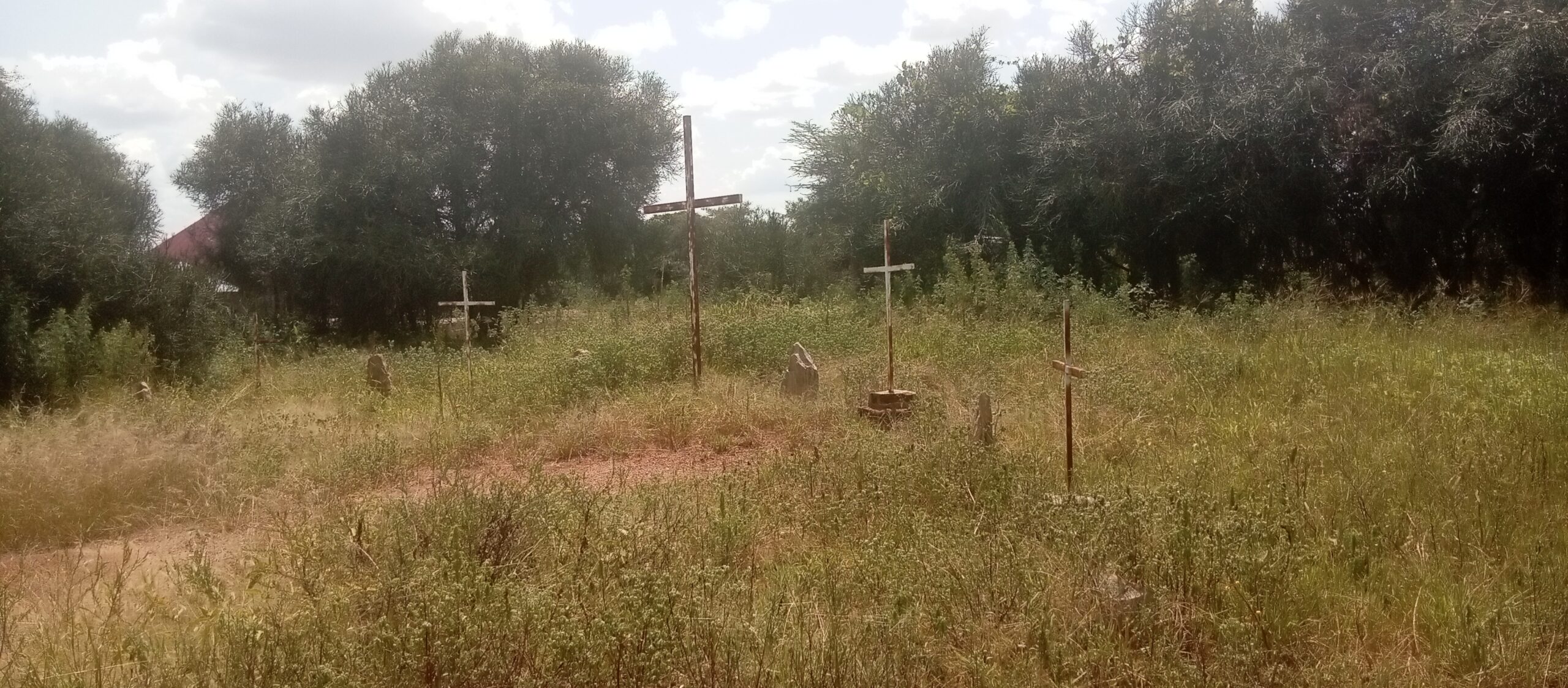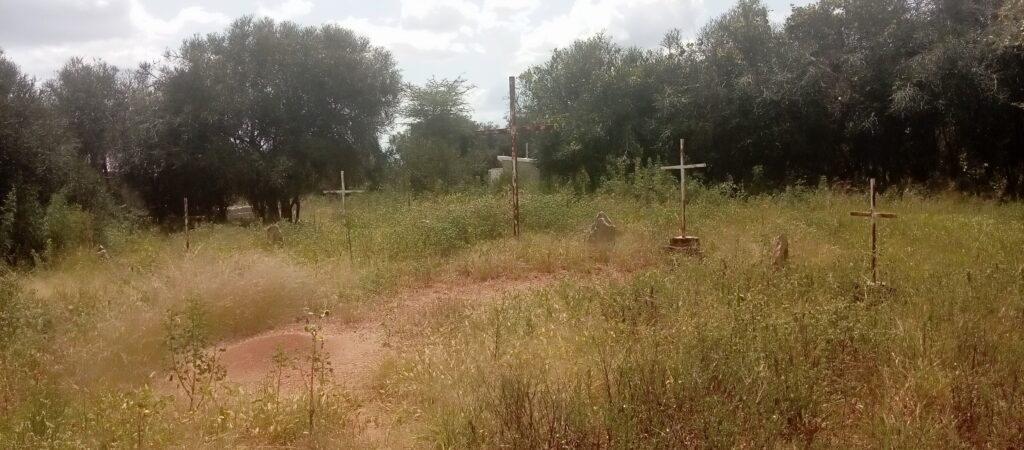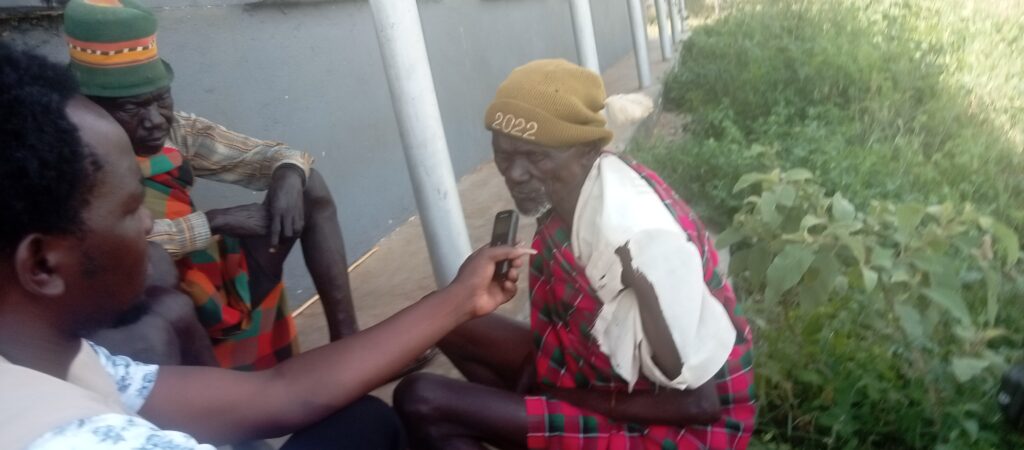
 Etoil A Karamoja
Etoil A Karamoja

 Etoil A Karamoja
Etoil A Karamoja
31 August 2023, 10:05 am
By Joshua Imalingat and Alfred Ogwang

Located at Nawoikorot village, Ngoleriet Sub County in Napak district, southern Karamoja is a little known and less talked about mass grave.
Marked with five raised rusty metallic crosses and pieces of raise stones is where the remains of thirteen or so members of the Bokora community lie following a massacre attributed to former president Iddi Amin.
Radio Etoil A Karamoja journalists set out to document information about the incident as part of the activites to mark the annual Karamoja Cultural Event taking place in Matany, Napak in September.

According to the survivors most of whom are now elderly, the incident occurred on a sunny day in July, 1972 when President Iddi Amin issued an order that all Karimojong should be forced to fully dress up as opposed to the traditional dressing that covered only parts of the body or none at all.
The president reportedly issued the order through Akobo Lowok, the Moroto County Chief at the time. The directive however promoted a bitter response from the Karimojong who responded with a protest against the forceful fashion.
This reportedly prompted an even more brutal response from the soldiers who are said to have indiscriminately opened fire at hundreds of mostly youths and women protestors who were also armed with sticks.
Depending on who you talk to, the number of people killed during the incident varies from between ten to hundreds.
Mzee Ilukol Lomuget one of the survivors who lost a brother during the incident narrates that on that fateful day thousands of youths and elders from Kangole, Matany, Lotome, Irriiri and Lorengechora areas had camped at Nawoikoroto to resist Amin’s decree and to show their discontent they started whipping soldiers who had been tasked to enforce the decree prompting them to shoot back.
He says he only escaped after scampering to the nearby gardens but upon return he counted about 13 bodies before the graders were deployed the next morning to bury them in a mass grave. Lomuget adds that a number of people were also arrested and taken to Moroto but were later released after they accepted to wear clothes. He says the memories are still fresh and tormenting him as he witnessed everything.
Kodet Logwee and Lomongin Apaanyeleth the other survivors say the Karimojong cherished their culture at the time and believed they were not naked. The survivors who say they now number less than thirty are seeking for compensation, financial, and psychosocial support for the loss of their loved ones.
Abraham Lobong another elder from Lotome Sub County in Napak district who was a youth at the time shares a similar story but says hundreds of people were killed.
Dr Mark Ilukol, a researcher and an elder from Kangole in Napak district believes the Karimojong resisted the order because they did not know the importance of modern dressing and associated them to the sexually transmitted diseases like syphilis and gonorrhea that were common at the time.
Whereas over the years nothing has been done to recognize the incident, this year government plans to erect a monument in remembrance of those who perished in the event. The place has however, remained unkempt and covered with grass. Save for the five metallic rusted crosses erected by the Catholic Church years ago.
Perhaps directly related to the massacre, people in this particular area fully dress up compared to other areas in Karamoja where people still prefer their traditional attire.
Remember this is still part of our series of stories we shall be broadcasting in support of the forthcoming Karamoja cultural event Napak Chapter.